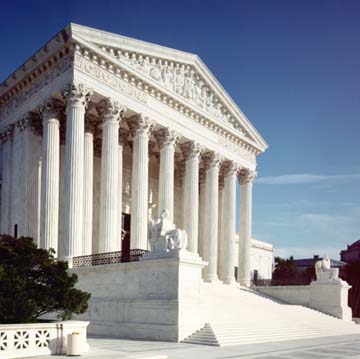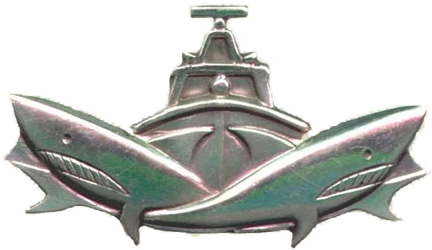Supreme Court Reinstates The Trump Travel Ban In Full Depending Appeal, Jonathan Turley’s Blog, Jonathan Turley, December 5, 2017

I do not see how these orders cannot be taken as a strong indication of the view of the majority on the Supreme Court in favor of the authority claimed by the Administration. Moreover, the orders contain a notable line that indicates that the Court wants this litigation brought to an end: “In light of its decision to consider the case on an expedited basis, we expect that the Court of Appeals will render its decision with appropriate dispatch.” If the injunction decision is any indication, the Court may be thinking of dispatching more than the schedule in this long-running litigation.
******************************
Yesterday, the Trump Administration secured two clear victories after the United States Supreme Court issued two orders lifting the lower court injunctions imposed on the travel ban. I have written repeatedly on the travel ban (here and here and here and here and here and here and here and here) and my view that the case law supported the Trump Administration. I thought that the appeal that reached the Supreme Court on the second round seemed likely to succeed while the third round was even stronger for the Administration. The Administration had already secured an order with the Ninth Circuit reversing the trial courts in critical respects. Now the Supreme Court restored the travel ban in its entirety pending appeal. The orders issued shortly before appellate arguments on the merits this week is a further indication that the Administration is likely to prevail on the merits. Indeed, while the orders do not dictate an outcome, they send a strong message to the lower courts on the skepticism of the Court.
When the Supreme Court lifted a significant part of the injunctions imposed by lower courts, there was a surprising footnote in the short order that I discussed at the time. The Court indicated that the Trump Administration had not asked for an expedited hearing before October. That set the travel ban up for what I described as “planned obsolescence” to expire shortly before the scheduled oral argument.
Buried in the order was the following line after the Court set the oral hearing for the start of the October session: “The Government has not requested that we expedite consideration of the merits to a greater extent.” So the Administration asked for expedition but did not push for a July argument, which would not be unprecedented. Instead, the Court set oral argument for the start of the October session. Why? If this is a matter of national security danger, one would expect at least a request for a July argument.
As discussed at the time, the answer would seem to be that the Administration was planning to issue a new travel order after the expiration (it would be smarter to wait for the passage of the 90 days to avoid arguments that the new order in any way worked in tandem with the prior order). The new order would then be based on new information, new priorities, and likely cover additional countries. That would make it even more difficult to challenge. The degree of reliance of lower courts on Trump’s campaign statements and tweets were always questionable. Replaying “Golden Trump Oldies” on a new ban is unlikely to garner as much of a judicial audience.
After the Supreme Court order lifting the injunction, the expired ban barred citizens of Iran, Libya, Somalia, Sudan, Syria and Yemen who could not show a “credible claim of a bona fide relationship with a person or entity in the United States” from entering the U.S. As I discuss, the new order could add additional countries to the list and identify other vetting concerns and procedures. It did.
The new order issued Sept. 24 contains a new list of countries that dropped some of the original countries while adding new non-Muslim countries. For the record, I have long criticized the earlier orders against the travel orders as relying too heavily on campaign statements and too little on existing case law. I believe that the administration would have largely prevailed on the second order if the litigation were not mooted. The new opinions in Hawaii and Maryland offered basically the same narrative while ignoring the new factual foundation.
There is no question that President Trump continues to make the defense of these orders more difficult with his controversial tweets, including the recent retweeting of controversial videos from an extremist group in England. However, the materiality of these statements has become more and more forced with each new generation of agency findings. Agencies studied the vetting procedures for months and reached a consensus on the changes that they deemed necessary for border protection. Such factual findings are normally accorded deference by courts, which are bound not to substitute their judgment for policy or political choices.
Judge Chuang notably found that the administration may have met the “low bar” of establishing that entry from these countries would be “detrimental to the interests of the United States.” However, he insisted that the administration did not “explain why the broad travel ban is necessary in a way…unrelated to religious animus.” It is not clear how the administration is supposed to prove that, particularly after shouldering the burden on the detrimental impact to the nation’s security. The administration cited “inadequate identity management protocols, information sharing practices, and risk factors,” including need technological improvements.
The new orders allow, for the first time, the travel bans to go into full affect. They notably do not include the prior limitation imposed by the Court in June when the Court lifted most but not all of the injunctions. At that time, three justices indicated that they wanted to lift the injunctions without limitations but the rest of the Court decided to preserve the injunction for those with established connections to the United States. On this occasion, only Ruth Bader Ginsburg and Sonia Sotomayor dissented to allowing the travel ban to be enforced in its entirety.
While the orders relate to the injunctions and not the merits, the Court clearly rejected the lower court finding under the preliminary injunction standard that the challengers had shown a “likelihood of success on the merits” of the case. The Court could also have rejected the showing that the plaintiff is likely to suffer irreparable harm in the absence of preliminary relief, that the balance of equities weighs in the plaintiff’s favor, or that a preliminary injunction is in the public interest.
I do not see how these orders cannot be taken as a strong indication of the view of the majority on the Supreme Court in favor of the authority claimed by the Administration. Moreover, the orders contain a notable line that indicates that the Court wants this litigation brought to an end: “In light of its decision to consider the case on an expedited basis, we expect that the Court of Appeals will render its decision with appropriate dispatch.” If the injunction decision is any indication, the Court may be thinking of dispatching more than the schedule in this long-running litigation.
Here are the orders: International Refugee Assistance order and the Hawaii order.







Recent Comments